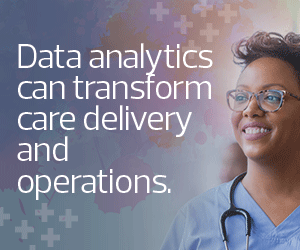The Benefits of Data Analytics for Post-Acute Care
Data analytics capabilities can enable post-acute care organizations to analyze large volumes of patient data quickly. Predictive analytics can help clinicians identify which patients are at higher risk for readmission or complications. With advanced analytics and a visualization dashboard, clinicians can respond immediately as they see signs and symptoms changing in real time, rather than reacting after something has happened.
Data analytics paired with remote patient monitoring can give the one nurse working the night shift better insight into what’s happening with all the patients at once instead of checking on them individually in their rooms.
On the operational side, data analytics can identify areas of the organization that could improve efficiencies and reduce costs.
Why Post-Acute Care Organizations are Behind on Data Analytics
Some post-acute care organizations are further along in their data analytics journeys, but there is still room for growth. The post-acute care organizations that have started to implement data analytics programs often focus their efforts operationally rather than clinically. Post-acute care leaders are using data analytics to track KPIs across a higher level to improve operational and financial efficiencies. Most post-acute organizations that focus on data are at the level of descriptive rather than predictive or prescriptive analytics.
Funding is likely the biggest obstacle to advancing data maturity at post-acute care organizations. Another barrier is that post-acute care organizations are often slower to adopt cloud, which is becoming a critical factor in data and analytics capabilities. The unwillingness to leverage cloud capabilities can hinder the adoption of data analytics.
Additionally, many of the application vendors post-acute care organizations use are also less mature in data analytics and effectively hold the data hostage, preventing post-acute care organizations from being able to do more with their data.
EXPLORE: How to achieve an effective data analytics program.
Post-acute care organizations can have limited budgets, which impact the ability to hire data experts within their IT teams. Data skills can be difficult to come by, even for larger provider organizations.
Other contributing factors include regulatory burdens, disparate systems, poor data quality and lack of data governance. To reach the level of data integration and interoperability needed to achieve data maturity, organizations need to make cultural changes, which can be difficult to implement.
Without data maturity, post-acute care organizations can’t take advantage of the artificial intelligence and machine learning tools available to support clinical decision-making.
How to Grow Data Analytics in Post-Acute Care Organizations
For post-acute care organizations that haven’t started their data analytics journeys, the best advice is to just get it going. Commit to more data-driven decision-making. Commit to making improvements, regardless of where the organization is today. Identifying an executive sponsor to drive the program forward can make a big difference in an initiative’s success. This person doesn’t have to be in IT, but must be someone immersed in the operational or clinical side of the organization.
One of the main goals of data analytics in post-acute care is to increase clinical efficiencies. This is especially important amid staff shortages. However, it’s critical that the implementation of a data analytics program doesn’t bog down staff. To avoid a negative impact on staff, post-acute care leaders need to ensure the intentional planning and rollout of new technologies and processes that don’t overwhelm clinicians and allow them to focus on their regular work. Having someone familiar with that side of the organization can make a difference in how the data analytics initiative is planned and received by staff. It's not just an IT initiative but also an organizational imitative. It’s vital that post-acute care leaders include nurses and other end users in the early discussions and planning.
READ MORE: How Backup as a Service boosts data protection.
Another thing to keep in mind: Don’t try to do everything at once. Start with the specific items that are most critical and build from there. A technology partner such as CDW can help post-acute care organizations evaluate and document what their current state is, and then help the organization create a strategy and roadmap with next steps that are a right fit for the organization’s size, budget and goals. CDW can help organizations achieve those milestones through either technology implementation or consulting expertise.
We can help organizations figure out where to start and which use case to focus on first. We can also help organizations better organize their data and consolidate their data systems to ensure they are using clean and complete data pulled from one central location for its analytics initiatives. Post-acute care organizations don’t need to go on this data analytics journey alone.
This article is part of HealthTech’s MonITor blog series.













